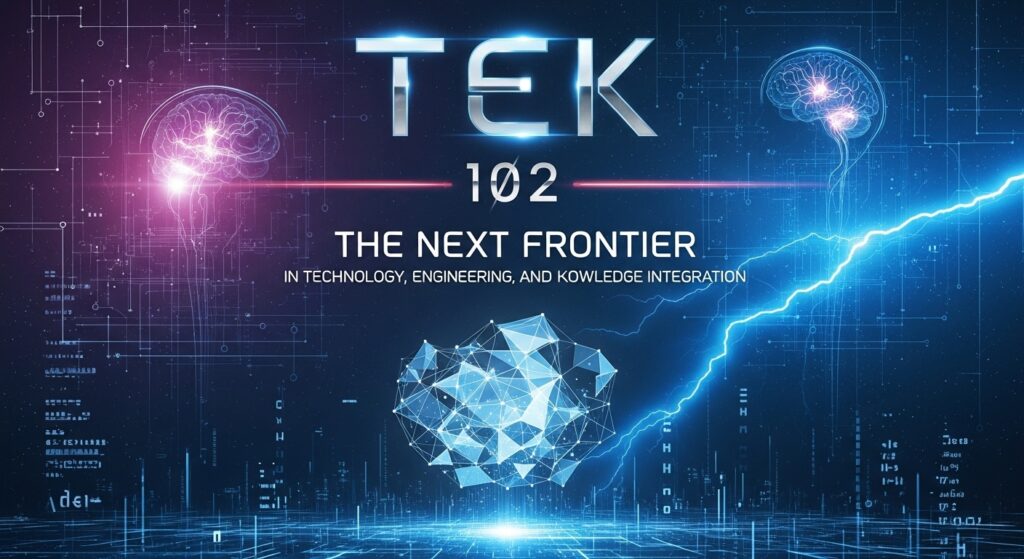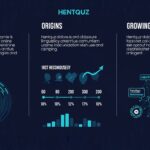In the age of rapid innovation, technology evolves faster than ever before. Amid this transformation, TEK 102 emerges as a symbol of integration—combining Technology, Engineering, and Knowledge into a unified learning and innovation framework.
More than a term, TEK represents the next phase in how we understand and apply technological intelligence. It focuses on shaping adaptive thinkers—people capable of not only using technology but designing and re-imagining it for the future.
Understanding TEK 102
The phrase TEK can be viewed as both an educational model and a technological mindset. It draws its roots from the concept of TEK:
-
T for Technology — the tools and systems we create.
-
E for Engineering — the method and discipline that bring ideas to life.
-
K for Knowledge — the theory and understanding that sustain innovation.
Adding “102” implies the next level—an evolution beyond the basics. Just as introductory courses are labeled “101,” TEK 102 symbolizes advancement, depth, and practical application. It is where foundational understanding transforms into real-world skill.
The Purpose of TEK 102
The goal of TEK 102 is to cultivate individuals who think critically, design creatively, and act responsibly in a technology-driven society. It connects three essential domains:
-
Learning through Doing: Moving from theory to experimentation.
-
Design Thinking: Blending creativity with functionality.
-
Ethical Application: Using knowledge to benefit humanity, not harm it.
By merging these ideas, TEK 102 prepares learners, innovators, and professionals to adapt in environments defined by constant change.
Key Components of TEK 102
1. Technology Literacy
Understanding digital tools, artificial intelligence, data systems, and emerging tech trends forms the base. TEK encourages fluency—not just usage—so that users can shape the technology they rely on.
2. Engineering Mindset
An engineering approach means breaking problems into smaller parts, designing solutions systematically, testing, refining, and improving. TEK emphasizes this iterative process to solve complex global challenges.
3. Knowledge Integration
Information without synthesis is noise. Knowledge integration within TEK connects disciplines—linking coding with creativity, science with ethics, and analytics with human behavior.
This cross-disciplinary approach allows learners to see the “big picture” and design solutions that are technically sound and socially relevant.
TEK 102 in Education
In many modern educational settings, TEK represents an intermediate stage in technology-based learning programs.
Students at this level dive deeper into:
-
Programming fundamentals (Python, C++, Java).
-
Circuit design and basic electronics.
-
Problem-solving through applied mathematics.
-
Data interpretation and decision-making using analytics tools.
-
Collaborative projects that mimic real-world industry scenarios.
The curriculum bridges theory and application—allowing learners to move beyond simulation into tangible project development.
TEK 102 and Innovation
Innovation thrives where knowledge meets application. In this sense, TEK becomes a catalyst for invention.
It encourages:
-
Prototype Thinking: Building early models quickly to test ideas.
-
Cross-functional Collaboration: Engineers, designers, and communicators working together.
-
Continuous Learning: Accepting iteration as a natural part of progress.
-
Ethical Design: Considering sustainability, privacy, and human impact.
By instilling these values, TEK nurtures creators who innovate responsibly.
Applications of TEK 102 in the Real World
The principles of TEK 102 can be applied across industries:
1. Smart Manufacturing
In modern factories, automation and data analytics redefine production. TEK 102 teaches the interplay between robotics, sensors, and software for precision manufacturing.
2. Renewable Energy
As the world shifts to green energy, TEK provides frameworks for integrating engineering efficiency with environmental awareness—designing systems that power progress sustainably.
3. Artificial Intelligence and Data Science
Understanding machine learning models, ethical AI, and human-machine interaction are central skills under TEK. These enable professionals to design algorithms that serve rather than dominate society.
4. Healthcare Technology
From wearable sensors to diagnostic AI, TEK 102 principles help engineers collaborate with doctors and scientists to create accessible, accurate, and humane solutions.
5. Urban Design and Smart Cities
TEK 102 encourages architects, data analysts, and civic engineers to work together—building cities that respond intelligently to human behavior, environmental needs, and infrastructure efficiency.
Core Skills Developed Through TEK 102
Learners who engage with TEK develop a blend of technical, analytical, and human-centered skills:
-
Systems Thinking: Understanding how each component affects the whole.
-
Critical Problem-Solving: Using logic and creativity together.
-
Collaboration: Integrating diverse expertise to build unified solutions.
-
Communication: Translating complex data into understandable insights.
-
Adaptability: Staying agile amid technological disruption.
These competencies are what define future-ready professionals.
The Human Side of TEK 102
While technology and engineering form the visible structure, knowledge—and the human values guiding it—make TEK 102 meaningful.
Innovation without empathy leads to imbalance. Therefore, TEK places emphasis on:
-
Ethics: Evaluating consequences before implementation.
-
Accessibility: Ensuring designs serve all communities.
-
Cultural Awareness: Understanding global diversity in technology use.
-
Sustainability: Building solutions that protect, not exploit, natural resources.
This human-centric perspective transforms TEK from a technical syllabus into a philosophy of responsible innovation.
TEK 102 and the Future Workforce
The digital economy demands professionals who are not just skilled, but adaptable and creative. TEK 102 aligns perfectly with these workforce requirements.
Employers increasingly seek candidates who can:
-
Bridge hardware and software knowledge.
-
Collaborate across departments.
-
Communicate ideas clearly and visually.
-
Learn and re-learn quickly.
Graduates and professionals trained in TEK 102-style programs possess precisely this hybrid competence—making them assets in tech-driven industries.
Digital Transformation Through TEK 102
Modern businesses undergoing digital transformation need guiding principles. TEK 102 provides a blueprint that aligns technical potential with human priorities.
It advocates for:
-
Data-driven decision making.
-
AI and automation balanced with human oversight.
-
Resilient systems that adapt to rapid market changes.
-
Employee upskilling through continuous learning.
In practice, this mindset prevents technology from outpacing organizational purpose.
Research and Development Under TEK 102 Principles
R&D initiatives benefit from TEK because it fosters an environment of structured creativity. Researchers adopting this framework focus on:
-
Breaking complex challenges into solvable units.
-
Using feedback loops for iterative improvement.
-
Sharing interdisciplinary knowledge.
-
Prioritizing real-world application over theoretical perfection.
This approach leads to faster innovation cycles and more scalable solutions.
Challenges in Implementing TEK 102
Despite its promise, the TEK framework faces a few challenges:
-
Resource Gaps: Institutions and industries may lack infrastructure for hands-on experimentation.
-
Skill Inequality: Uneven access to digital education limits inclusivity.
-
Resistance to Change: Traditional systems often hesitate to adopt interdisciplinary teaching models.
-
Ethical Oversight: Without strong guidance, technological enthusiasm can overshadow responsibility.
Addressing these issues is essential to unlock TEK 102’s full potential.
The Broader Vision Behind TEK 102
At its deepest level, TEK 102 is a call to action: to view technology not as a destination, but as a journey of continuous discovery.
It invites us to ask:
-
How can innovation remain ethical?
-
How can engineering serve both industry and humanity?
-
How can knowledge flow freely between disciplines?
When these questions drive decision-making, progress becomes not only smarter but also sustainable.
Future Directions for TEK 102
The next evolution of TEK may include:
-
AI-assisted learning environments that adapt to each learner’s pace.
-
Virtual laboratories for remote experimentation.
-
Global collaboration platforms linking institutions and industries.
-
Data-ethics frameworks embedded directly into technical education.
-
Open-source research networks to democratize innovation.
Such advancements will push the boundaries of how technology, engineering, and knowledge converge.
Conclusion
TEK 102 stands as a modern framework for growth—uniting the precision of engineering, the creativity of technology, and the wisdom of knowledge.
It challenges learners, innovators, and leaders to think beyond devices or algorithms—to consider how innovation can uplift people and ecosystems.
As industries transform and boundaries blur, TEK remains a guiding philosophy: progress with purpose, intelligence with empathy, and design with responsibility.
The future belongs to those who not only master technology but also understand its meaning—and TEK is the bridge to that future.






